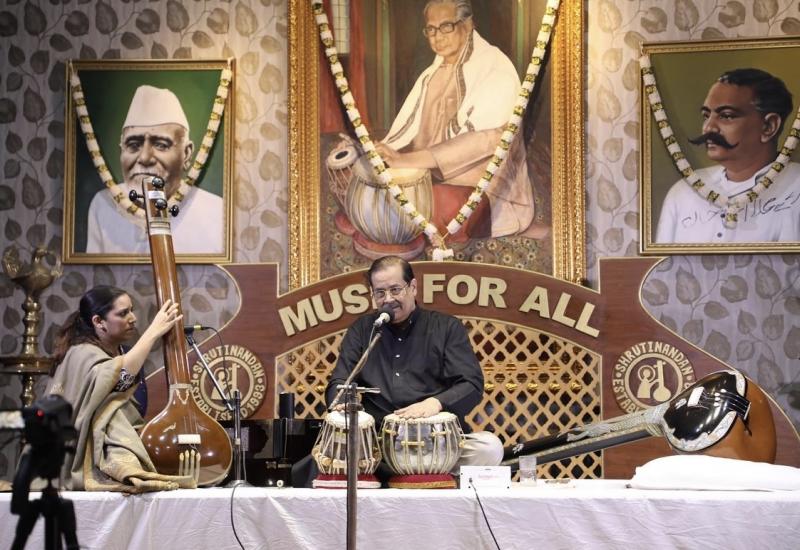In Conversation with Mira Kaushik, Director of Akademi
The task of putting South Asian dance on the map of London and the UK was a tall order. When Pushkala Gopal, dancer and former Director of the Academy of Indian Dance, left in 1984, the fledgling organisation still needed a lot of nurturing. Mira Kaushik was appointed, fresh from her experience of community arts and with bundles of confidence and daring. From saving the Company from impending closure, she went on to make Akademi (name change 1990) the most significant voice of South Asian dance in the UK.
Three decades later, having secured a firm foundation for South Asian Dance, Kaushik is preparing for her departure. When Sanjeevini Dutta met her last month in Akademi’s Belsize Park office, Kaushik was in a reflective mood.
On Jan 1, 2020, when you wake up and have no Akademi to go to, how do you think that you will spend the day?
I have already started rehearsing for that day. I have decided to step down when I am at the peak of my game, at a time when the Akademi’s work is being appreciated and celebrated around the world. I want to ‘die young’ and become immortal (laughs).
A life as an artist/entrepreneur beyond that?
Oh yes, both of those; from being a producer, consultant, influencer and mentor to an actor, painter and Hindi teacher. Generally, every substantial project takes two to three years. Next year will be a year of contemplation and reflection, while looking for new, exciting and innovative ideas.
What is your way of contemplation – a retreat, seeing lots of work?
All of that… Last year, while attending a four-week retreat, I realised that my brain is tamed to work 24/7, so I will be miserable without any work. I will need to take a year off for my mind and spirit to recuperate after thirty years of hard work. This will also be a time for self-development, to sharpen up my skills, do my research and development, find suitable partners and watch more interesting work.
I am deeply interested in contemporary Indian visual art and modern inter-pretations of the old classic literature. Dance theatre, circus and outdoor arts remain my interests.
Will it have an India–UK connection?
Definitely! I hope to work on few strategic India-UK projects. I want to continue working within the dance sector because that’s the field I know best. I will be able to take my work beyond boundaries. I have the experience of creating The Troth and I know what it takes to negotiate two entirely different cultures of the world.
I want to take you back thirty years to when you first took over as Director of Akademi. What did the organisation look like at the time?
My first experience of visiting Akademi in the late eighties was in a Masterclass by Guru Kelucharan Mohapatra, where I also met you for the first time! I was living in Camden and had a job far away in Greenwich. As a young mother I was attracted by the idea of a local job. [The Academy of Indian Dance as it was then called was located at The Place, Euston].
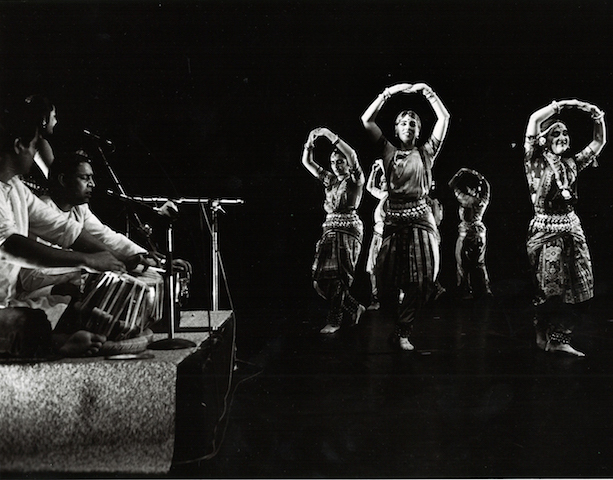
When I joined Akademi, it was a touring company. They had done two successful bharatanatyam productions and were preparing to do a kathak production on the story of the Taj Mahal. They had considerable artistic achievements but administratively they lacked the needed rigour. Within a month, the situation had changed: an Arts Council officer had a vision for South Asian dance and Akademi had no role to play in it. The funders got together to close it down, by which time I had already resigned my old job.
The organisation was not financially viable and there were moves to shut it down, so what did you do?
The late Robin Howard was Akademi's Chair at that time. I decided to lead and fight the battle through the press – we did not have social media the way we have now. I found a list of twenty or so dance writers and critics and started faxing them a new Press Release every day. Finally, the editor of the Sunday Times Culture pages, Nicholas Dromgoole, sent in a journalist to cover the story and we were splashed across its middle pages.
This activated the entire ethnic press, the New Statesman and three TV Channels (Asian Network, LWT and BBC); and so Greater London Arts had second thoughts. I was battling it like Jhansi Ki Rani!
We held on to the grant from Greater London Arts. The Arts Council National Office took the dance funding pot intended for South Asian dance nationally to regions for matching bids and Arts Council Yorkshire rose to the occasion, by setting up Aditi [as the national organisation for South Asian dance] in 1988.
Akademi’s Board decided to consolidate all its work in London and stop being a touring company. The Inner London Adult Education Authority was a committed ally and hosted Akademi’s dance classes at their Adult Education Institutes. Our teachers were Pratap Pawar, Priya Pawar, Unnikrishnan and Pushkala Gopal.
I decided to centralise the classes at The Place. The students from the existing evening classes also migrated from the Adult Education Institutes to The Place. If you remember, you also joined us as one of our first odissi teachers at that time. These classes drew a mixed bag of hippies and orientalists, who wanted them to remain a casual leisure-based part-time evening activity. However in our charter, as set out by Tara Rajkumar [Akademi’s founder], our vision was to train the future professionals.
During one of the evaluation and research processes of our training, I found myself considering the difference between an Akademi class and any other community centre-based class, since all of Akademi teachers were also teaching private classes on other days of the week. The Bhavan was also running classes very successfully. I had to find the gaps.
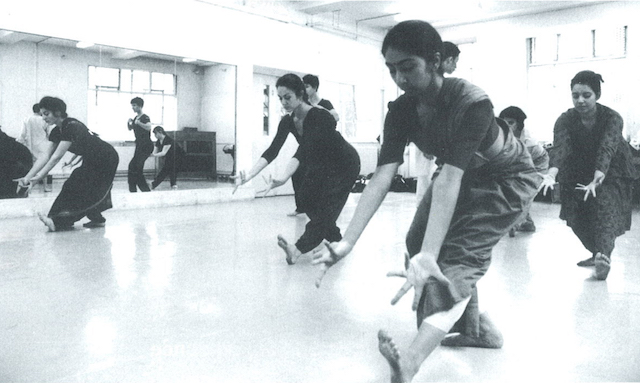
At the same time I had been invited to be a part of the National Vocational Qualification planning committee to look into vocational dance training programmes and their suitability to the needs of classical Indian dance students. I realised that actually our private teaching infrastructure was the equivalent of conventional ballet classes in church halls. I went to ISTD (The Imperial Society of Teachers of Dancing) to meet their director. On their middle marketing floor, there was a big map of the world. I asked their director: ‘Do you know how many parts of the world have an Indian diaspora?’ He had already done his business research and very quickly agreed to work with us to set up a South Asian dance course.
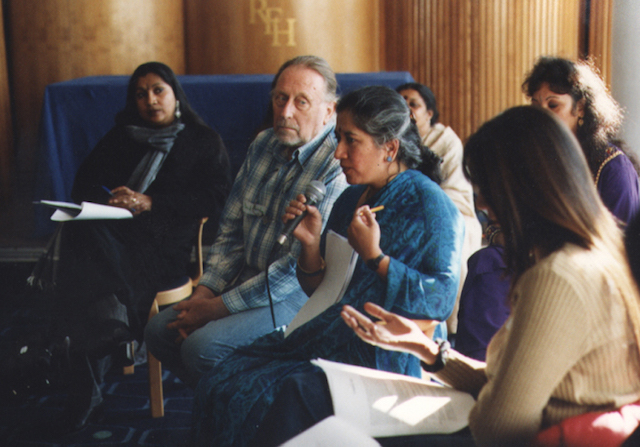
Left to right: Piali Ray, David Henshaw, Pushkala Gopal
It took us four years to collect kathak and bharatanatyam dance teachers, reach a consensus on the criteria for assessment, create our own syllabus, workshop it and assemble the first hand-picked faculty. It was officially launched in 1999/2000. The creation of the ISTD syllabus was also followed by the establishment of a BA Hons for South Asian Dance at the Contemporary Dance Trust, which continued for two years.
So do you think that you affected structural change?
ISTD’s South Asian dance project is the biggest achievement of my career at Akademi. It has created a business infrastructure with longevity for South Asian dance teachers. The examination has global recognition; it is modern but has not diluted the classical nature of the form. The faculty is also constantly reworking and improving the syllabus.
Akademi’s Education & Community Department was set up in the early 1990’s to link South Asian dance to the schools’ curriculum so that projects would be relevant in an educational context. Our first project was based on the Chipko movement [a forest conservation movement]. That led us to create The Tale of Two Rivers – Ganga and Thames project, which brought in new sponsors. Over the last twenty-five years we have carried on working with theme-based, issue-based and special needs projects, eventually delivering large-scale Learning Skills Council contracts. This department also decided to work with adults and older people in different contexts. Our current work is based in eight hospitals and we recently completed twenty-one years at Chelsea and Westminster Hospital. The Education department became the backbone of Akademi and it still is. It keeps us straight, relevant and connected to the world we are based in.
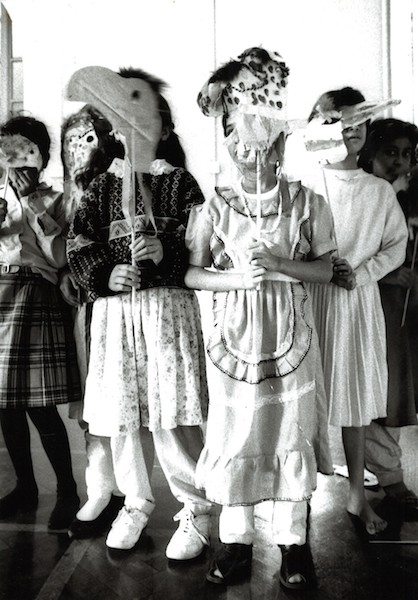
Another big success for Akademi was Coming of Age, celebrating twenty-one years of Akademi, at London’s Southbank Centre in 2000. Please comment.
While I was busy developing the ISTD project, dancers were asking me, what is the point of training – where were the opportunities for performance? One day I visited the Southbank Centre to meet Alistair Spalding [Head of Dance and Performance at that time] to discuss Akademi’s twenty-first anniversary celebrations.
It was winter, we were standing on the fifth floor and I said to him, ‘Imagine 200 dancers in rows with torches parading along both of the bridges leading to the Southbank Centre; in the middle of the river there is a platform where a helicopter drops a dancer and then the building becomes a fishbowl as the windows are flooded by bodies of moving dancers.’ The idea was born in the moment as a joke. We brought in three choreographers, Filip Van Huffel, Christopher Bannerman and Mavin Khoo. Coming of Age was directed by visual artist Keith Khan, with the help of Navtej Singh Johar and Pushkala Gopal. More than 100 classical dance students participated in it. It was an amazing breakthrough for us and increased Akademi’s visibility considerably.
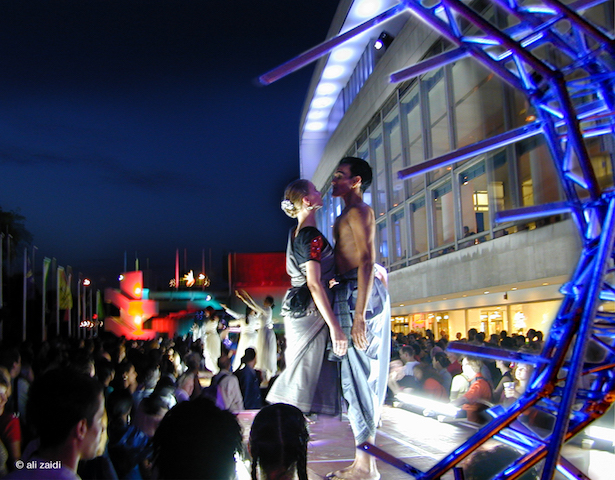
Over the last nineteen years Akademi has gained a considerable status in the world of Outdoor Arts. Akademi’s experimental cross-arts work such as Escapade, Bells, Waterscapes, Initium, SufiZen, Maya and Paradiso – Man’s Enduring Search for Perfection has taken Akademi to unconventional spaces and the previously undiscovered audiences of the thousands of people who are interested in Outdoor Arts.
How did you experience the dance world, which is dominated by contemporary dance?
After the mainstream world of ballet, the independent dance sector in this country is run by a western contemporary majority. If you start looking at the CVs of dance programmers, venue managers, funding officers and dance writers you will find that the majority of them are graduates of five or six universities or institutions. They have a particular gaze, aesthetic and creative sensibility. The narrative tradition does not work for them – in their aesthetic, everything is visualised through abstraction. The moment you start to narrate your work, you have lost their interest!
The wider dance world will respect me because I am a larger-than-life character and because I have been part of it for so long. But the dance that I represent (classical Indian dance) is almost irrelevant to their artistic agenda, apart from the large-scale spectacle and the education and community work that Akademi has done.
At this time of austerity each venue has fewer programming slots for South Asian dance. As long as they are supporting the token artists that are seen to be following a certain aesthetic, they believe they have done their bit and ticked the box.
The dance sector has very few spaces for South Asian dance artists. Some of the larger inaccessible venues have created gated communities of creatives, worsening the existing hierarchy of dance. Unfortunately, there is an ongoing desire amongst upcoming artists to be part of that closed club, and unless that small group of people with too much power in their heads includes you, you are not valid. South Asian dancers need to break free from all that suffocation and create their own markets.
The Arts Council have recently recognised the fact that they have been supporting fewer classical Indian dancers. I think classical Indian dancers need to discover their own markets and be proud of them. I am also very hopeful as I see the impact of larger investments on one of our alumni, Aakash Odedra, on the dance sector in the Midlands region.
If the 200K which goes as funding to Akademi went to artists instead, what difference would it make to the sector?
If 200K did not come to Akademi and went to fund a production it would cost about the same amount. Actually, we raise one and a half times the 200k initial funding sum ourselves to invest in the South Asian dance sector and a large number of dancers benefit from the investment. Our role has been to take a young student from a part-time dance class on a journey of understanding of the profession.
Our artist development activities have been set up to develop professional dancers and enable them to have a career. We are a finishing
school for dancers. The Choreogata project, for instance, raised £90K; £60K of that was distributed to dancers in the form of twnty-three commissions. We also assisted these dancers with applications for Grants for Arts which raised further £150k for their creative work. We seeded the creation of current touring works of many companies including Seeta Patel, Shane Shambhu and Kamala Devam.
Our whole Education department exists not only to serve the British community but also to train dancers for an educational career in the long run; and place them in substantive growth sectors for dance participation leaderships, for example, dance with SEN children and dance for dementia and older people, both growing employment markets.

Our current work is driving forward the professionalisation of the South Asian dance sector in the UK.
We have also been at a stand-still for the last eight years, with diminishing subsidy.
What is more important: to be a producing house or a sector support organisation?
The core value of the organisation is to support the sector. For us, the dancers are the gods who need assistance. If there were no South Asian dancers in the country, there would be no Akademi. For years we functioned as the self-appointed South Asian dance sector support organisation in the South of England.
However, in the last funding round, the Arts Council did not see us as a sector support organisation – One Dance UK fulfils that role. So Akademi’s Board decided that we cannot be a sector support organisation, and that in the new phase of our funding we should apply to ACE to become a production house in its new phase. That is how we produced The Troth, which has won several awards.
Are there other structural changes that you envision? Where is the next battle?
Serious Indian classical dancers in this country aren’t able to connect with the wider professional dance training infrastructure here. Instead, they look back to India for all their inspiration and models of practice. Until things change at that level, our global intention to grow in sync. with world-class dance practice will be hindered.
Leela Samson met me recently and said, ‘You are spoiling the sector in the UK, doing less of dance and more in talking’.
Do you agree with that?
Maybe what she says is right. The world of ISTD and CAT (Centre for Advanced Training) is successful; ninety-eight per cent of the graduates will become informed audiences; but those two per cent who want to pursue dance seriously need more.
The current training investment in the UK is not geared towards creating a profession. There is no level playing field between South Asian dancers and students of ballet or contemporary dance.
Are you not going to ask me about Usne Kaha Tha [The Troth]?
I believed that this story of Sardar Lehna Singh, a Sikh, the protagonist of The Troth, could not be narrated through a classical Indian dance style like bharatanatyam or kathak. The story was written in 1915, the time when Indian cinema started. I decided to produce a living silent film. When I saw the work of Gary Clarke (Coal ), I realised that this guy could deliver my vision and Akademi’s board very generously stood by my proposal. We created a piece which has the authentic spirit of India and yet is relevant to the world we live in. I believe that being relevant is something that we cracked very early on at Akademi. In that sense we have ‘Indianised’ the West – made it part of the mainstream.
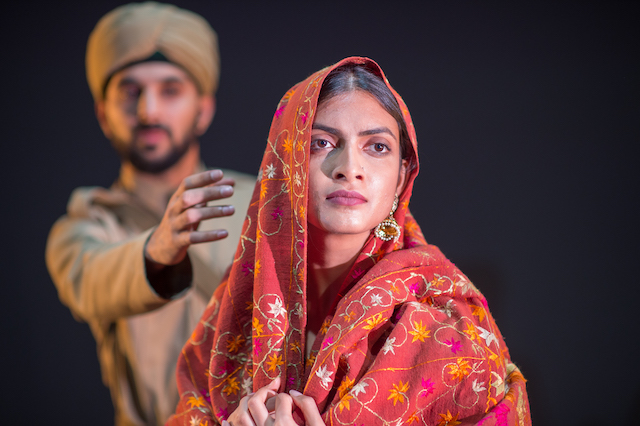
When I arrived, Akademi was only a teaching institution. Now I think we have enriched the lives of Londoners by developing opportunities for artists to create and perform, and by running large research-based learning and participation projects with children, older people and in SEN contexts. The ‘Indianisation’ of the West has been a victory for Akademi. We are now an organisation woven into the cultural tapestry of the British creative DNA instead of standing out like a colourful patch.
It is a good point to draw our conversation to a close. I thank Mira Kaushik for her time, we have conversed for an hour and forty-five minutes.












